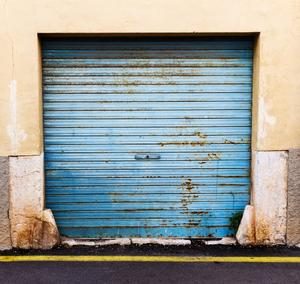Whether you use your garage for your car, as storage, or as a utility room, mould can creep in and start to cause significant damage. It is a common problem, as most garages don’t have the same ventilation as homes and therefore damp can get in, encouraging mould growth. Garages are also not legally required to have a DPC (Damp Proof Course) in place. How can you reduce or avoid mould in garages, and what are the best ways of avoiding damage to your property from mould?
How does mould form?
Mould forms in damp, dark environments, and can find its way into the building in multiple ways. The garage can be susceptible, as not only is it not protected in the same way as your house, but it is also often victim to damp cars and bikes, wet shoes and leaking rain water. Your garage is particularly vulnerable if it’s used as a main entrance. Inadequate exterior drainage outside that does not take rain water away from the building will also increase If you use your garage as storage, you may be dismayed to discover that mould particularly enjoys cardboard and fabric, as well as painted concrete often found inside garages.
How can I prevent mould from growing?
Remove any standing water immediately and dry the area. Consider a dehumidifier if suitable for the space (if your building is suffering from rising damp then a ventilator will not help). Improve your thresholds and seals where you can to avoid creeping water. Despite frequent assumptions, this doesn’t mean entirely sealing the garage. That will only enhance the problem. You need to encourage ventilation, fresh air and, if possible, sunlight. Consider installing vents or air bricks. If you need to paint, use waterproof or mildew resistant products. Remember that a painted floor can disguise mould growth, so don’t be fooled just because it looks okay.
I already have mould, what do I do now?
If you currently have items in your garage that you wish to protect then consider using pallets to raise items off the floor. Use vacuum sealed bags to store any fabrics or mould-vulnerable items if you MUST store them in the garage. Use plastic boxes instead of cardboard and check that the lids are fully sealed.
Remove the mould as soon as possible. If you want to remove the mould without the aid of a professional cleaner, ensure that you are working in a well ventilated environment and wear protective gear; gloves, a mask and goggles or glasses are essential. There are a number of guides to mould removal available – you will need to use warm water and either bleach or a specifically designed cleaning product. You can use a wire brush or scraper to clean mould from the walls, floor and ceiling.
Once you have removed all mould, ensure that you thoroughly dry the area. If the mould problem is significant, you may wish to consider bringing in a professional to establish the cause and best course of removal so you can prevent the return of the mould.
Consider the preventative measures above. Small redevelopments of your garage could potentially save you time, money and stress over mould damage in the long run.




